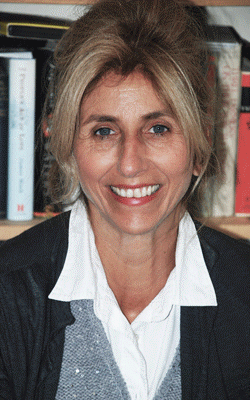Jesteś tutaj
Adriana's cord blood therapy for cerebral palsy

Adriana was born in Italy in 2009 after an in vitro fertilization and her parents were finally achieving the dream of their lives. Everything appeared to be fine with the pregnancy until the last moment when the mother started to feel contractions and ran to the clinic. She had forgotten to bring the kit for storing cord blood stem cells, but luckily Francesco from SmartBank reached them at the clinic right on time.
The clinical status of Adriana before birth kept getting worse and worse. She was suffering and the gynecologist was busy with another delivery. It took a while before a C-section was performed. Later, Adriana was diagnosed with a cerebral lesion caused by hypoxia at birth. Hypoxia is a medical term for when a region of the body does not get adequate oxygen supply.
Adriana's symptoms of cerebral palsy were not evident at the beginning and it took a while before her parents decided to seek therapy. They began seeing neurologists in Italy. Again and again they asked the neurologists if the stem cells in Adriana's cord blood might have therapeutic potential for her brain lesion, but all of the neurologists dismissed the cord blood stem cells as useless. Finally, three years after Adriana's birth, her parents called back SmartBank.
As the scientific director at SmartBank, I immediately suggested that the parents should get in touch with Duke Medical Center, where a clinical trial was enrolling children from all over the world for therapy of brain injury with their own cord blood stem cells.
Adriana's stem cells were identified in the SmartBank storage facility at BioVault Ltd in the UK. Then BioVault sent the cord blood unit to Duke Medical center for further testing according to the UK and US regulations. Adriana had enough stem cells for at least two therapies.
Adriana and her family traveled to the United States for the cord blood therapy. She was infused the first time in May 2013 and the second time in December 2013. Prior to this therapy, Adriana was not able to speak. She also suffered from muscle contractions called dystonia, such that she was not able to walk or even to sit without a support.
One evening before Adriana left for the second infusion in North Carolina, I received a phone call. A little voice was whispering at the other end, saying that she was happy to go and see Dr. Kurtzberg once again after 6 months. Adriana could talk!! This was one of the few moments in my life when I felt that so many efforts and battles to advocate for stem cell therapy were rewarded.
Adriana had a repeat MRI one year after the first infusion and her cerebral lesion had disappeared. She still needs to train herself like a little soldier every day in order to recover competely from dystonia, and she requires an exoskeleton in order to walk. However she can now speak fluently.



 Irene Martini, PhD, is the co-founder and Scientific Director of
Irene Martini, PhD, is the co-founder and Scientific Director of